FAR and Asteroids
Mark Pottenger
The FAR (Frequencies for Aspect Research) Program is one of our computer programs created to help in astrological research. KOSMOS, the ISAR journal, is carrying an extensive article in three parts about the FAR Program. The HELIOGRAM, the NCGR heliocentric special interest group journal, carried a shortened version of the same article.
This article is to share some aspect patterns I have seen using the program since writing that article. In brief, the FAR Program looks at the ecliptic longitude angle between pairs of planets and other astrological points. It looks at the angles every day in whatever years you request and counts the degrees of angular separation. Tables are produced which give degree-by-degree counts of the astronomical frequencies of angular separations, letting astrologers look at aspects and orbs or plot the numbers from the tables for visual understanding. All the bar graphs in this article are plots of the angles counted once per day for the century 1900-1999. The FAR Program also prints simple graphs of angular separation through time (like one line from a graphic ephemeris), and several of these are included here because they make it easier to understand what kind of motion produced the frequencies shown in the bar graphs.
In general, heliocentric angular separations show patterns reflecting the difference between perihelion speeds and aphelion speeds while geocentric angular separations show a lot of patterns influenced by retrograde cycles. Slow relative motion produces a frequency PEAK because more time is spent at each degree of separation and fast relative motion produces a frequency TROUGH because less time is spent at each degree of separation. Retrograde cycles tend to produce spiky patterns of alternating peaks and troughs with the peaks on the degrees of separation covered three times during the cycle.
In the latest round of changes to the FAR Program, I added the ability to use ephemerides from the 1988 release of the CCRS Horoscope Program, including the big four asteroids and Chiron. While testing the program, I got distributions of the angles between all possible pairs of the big four for this century. I expected that there might be some interesting patterns, since all four asteroids are in the main belt between Mars and Jupiter and have similar orbital periods. What I found was so interesting I thought other people might also like to see the graphs.
Ceres and Pallas have orbital periods so close to the same length that it takes centuries for the angle between them to make a full circle. Heliocentrically, they spend most of the 20th century semi-sextile or sextile, never getting closer than 15 degrees apart or farther than 70 degrees apart. Geocentrically, they vary between 10 and 105 degrees apart, with the peak still at the semi-sextile.
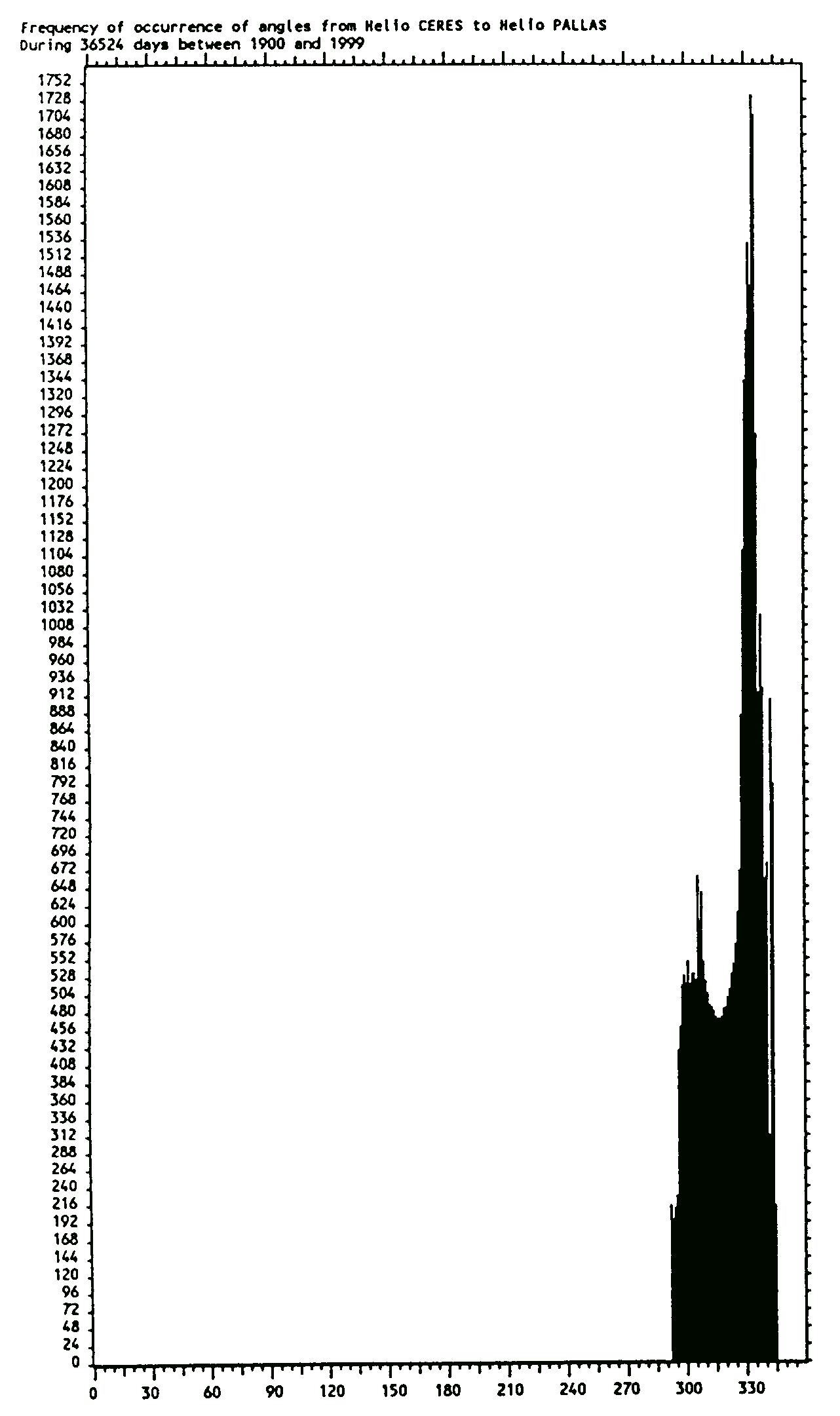
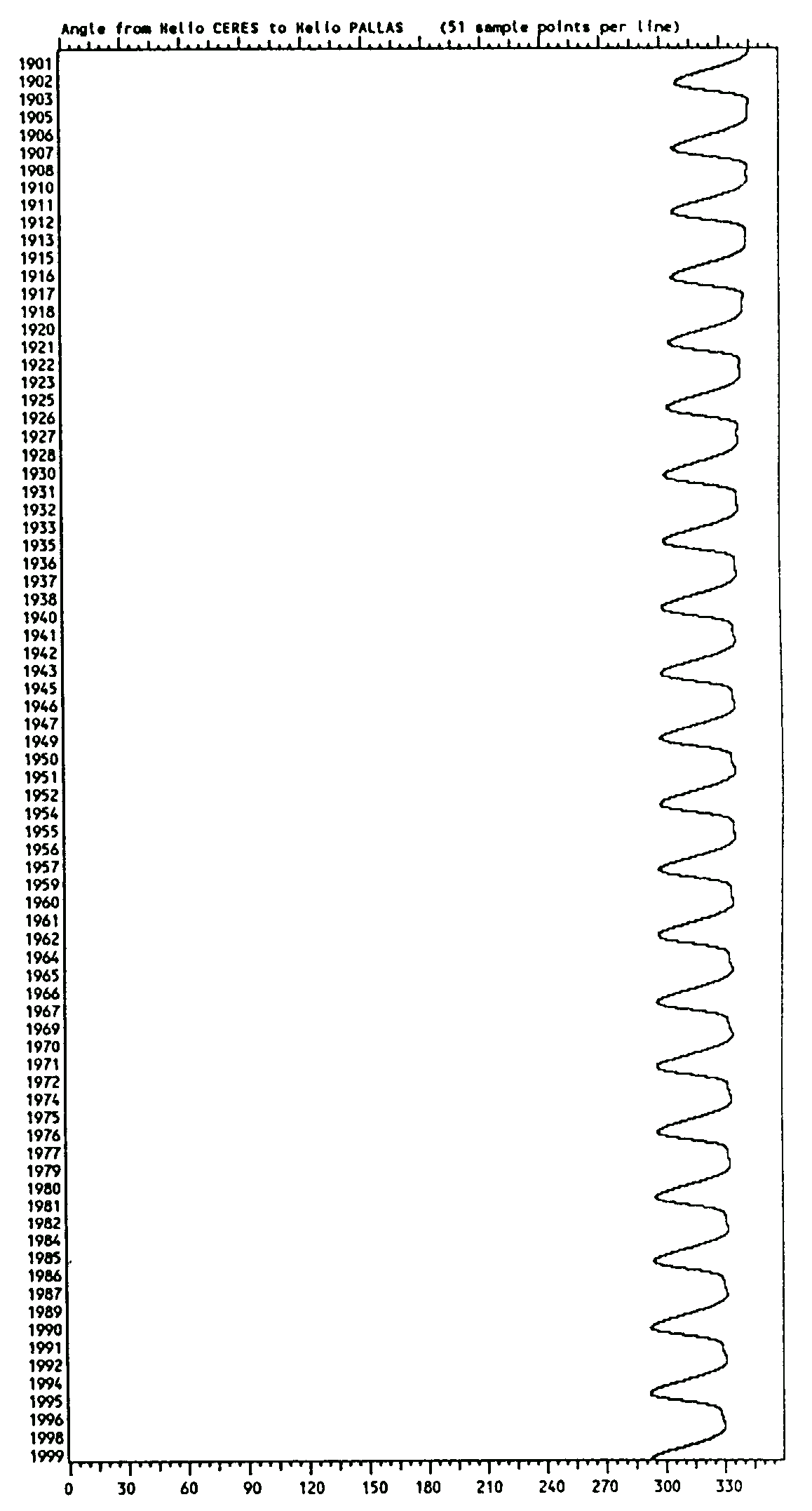
Helio Ceres-Juno angles show a classic retrograde cycle pattern and the corresponding spiky frequency plot.
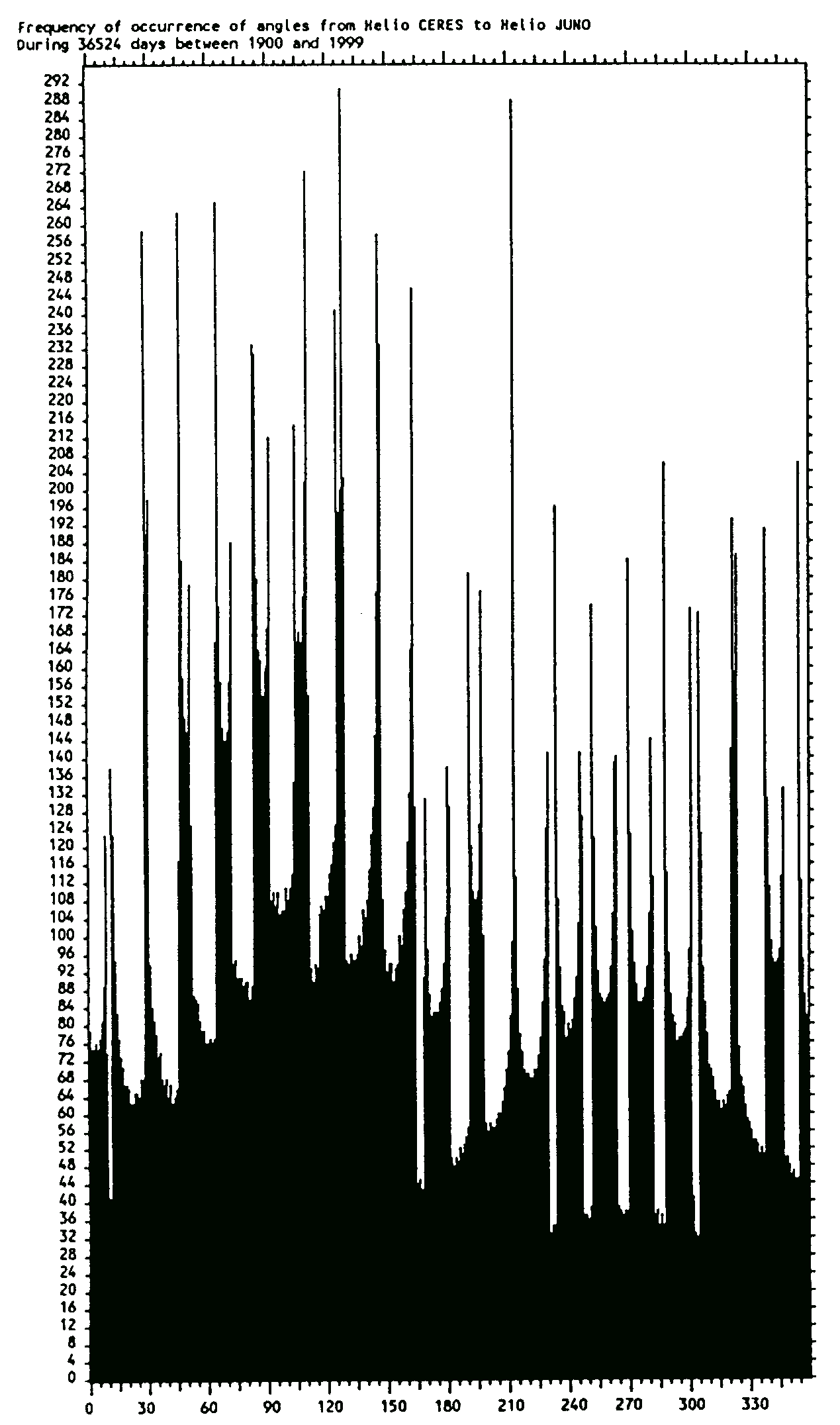
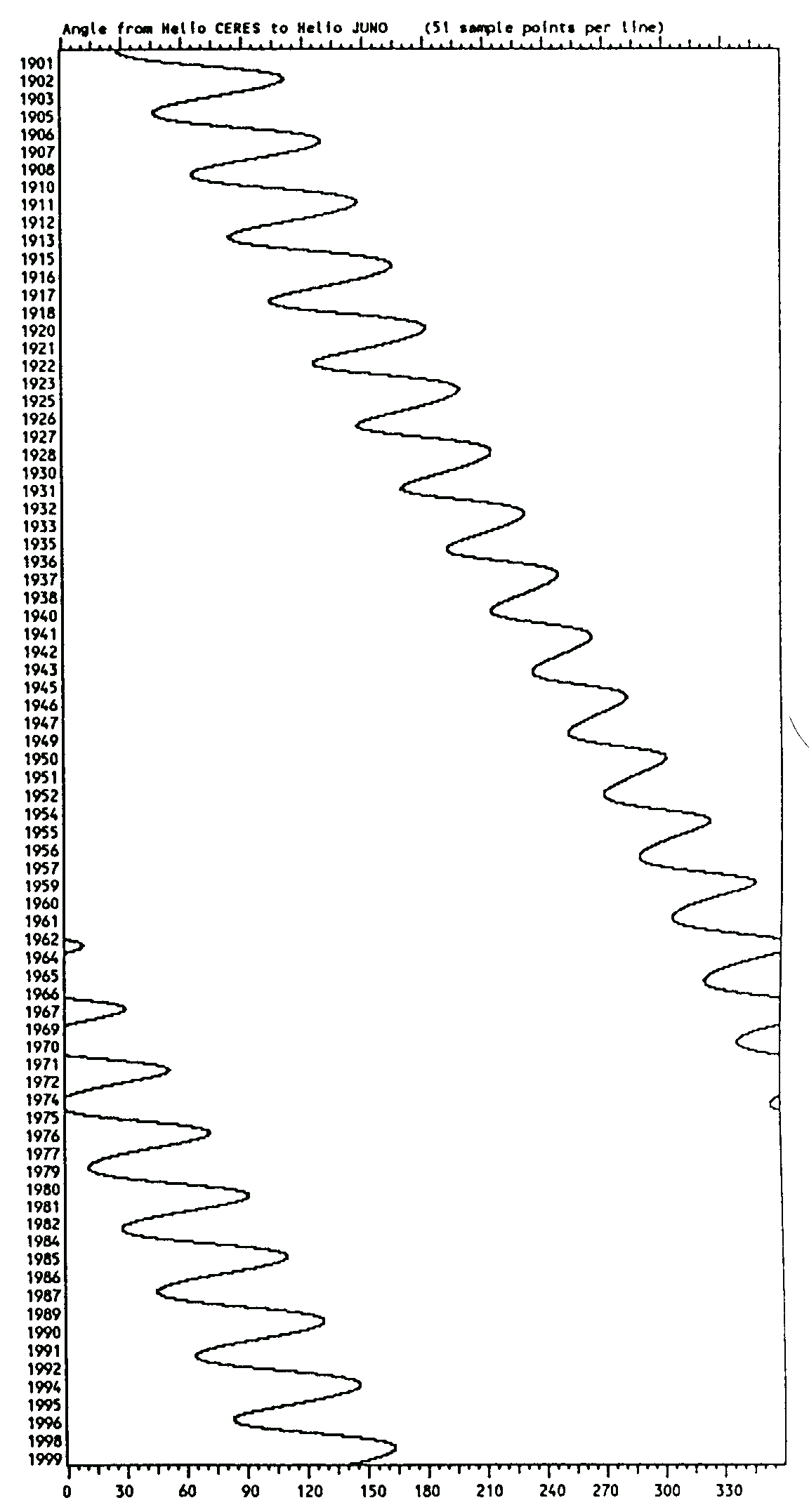
Helio Ceres-Vesta angles are one half almost smooth and one half retrograde/spiky.
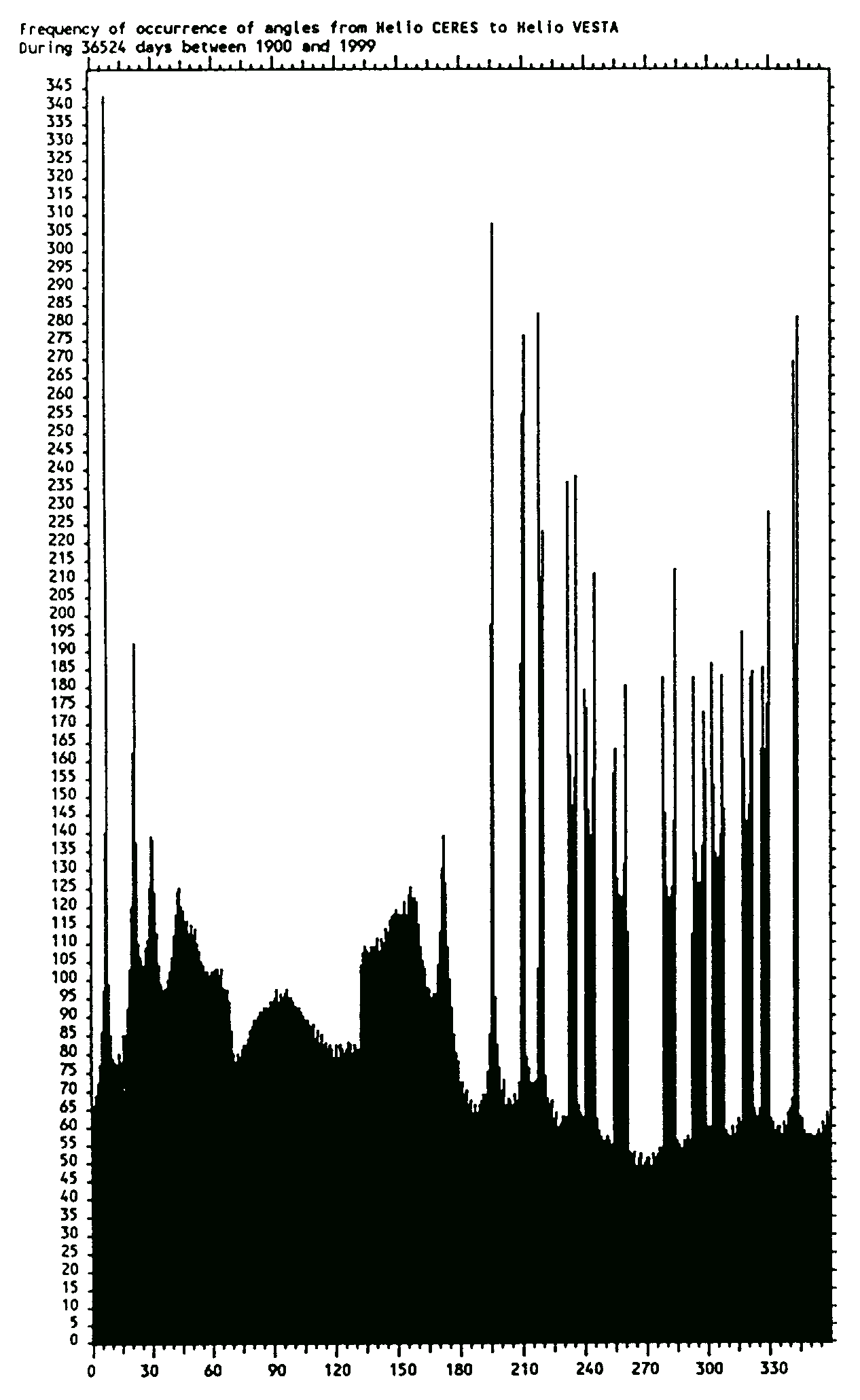
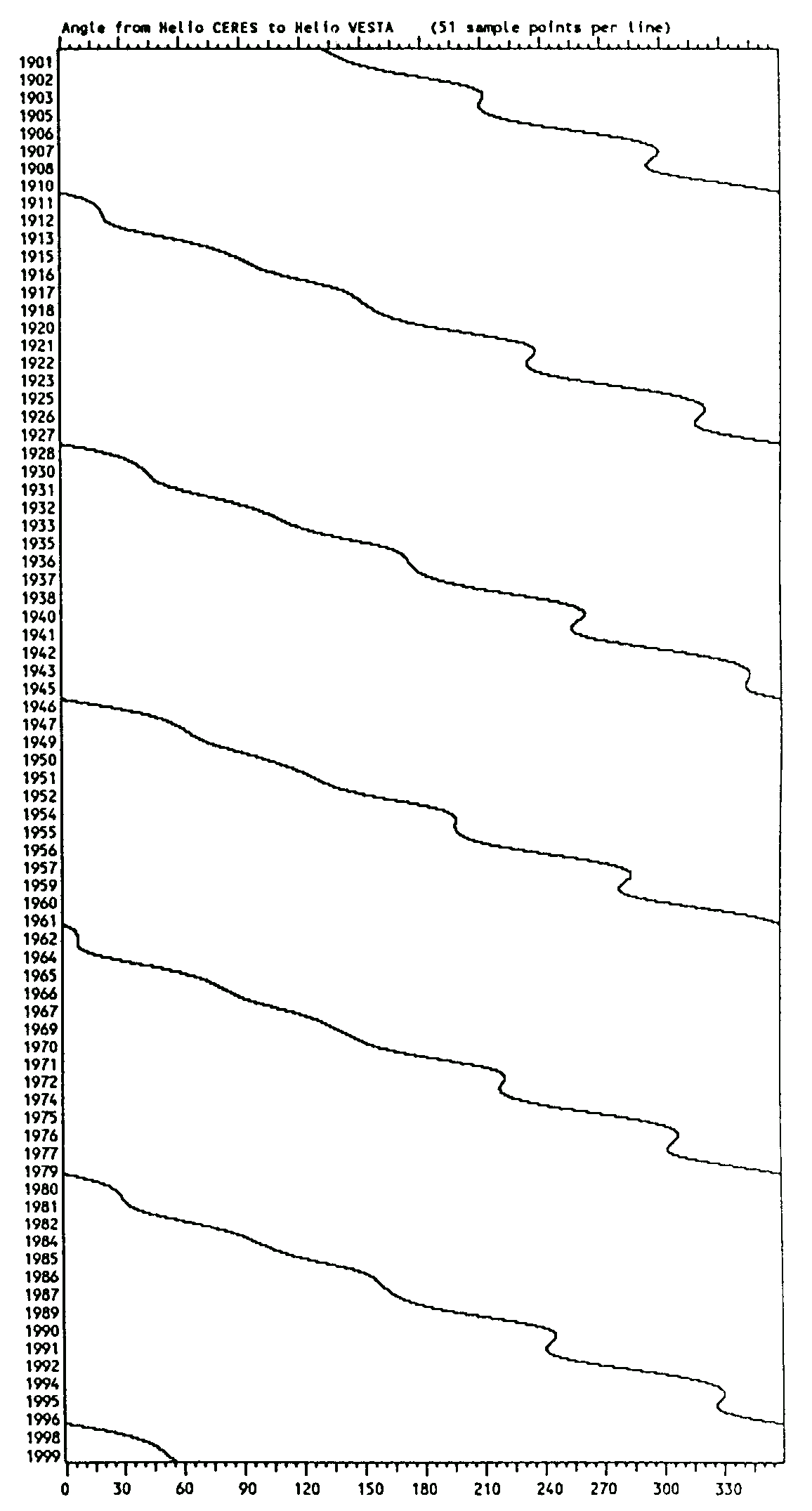
Helio Pallas-Juno angles are retrograde/spiky, with some extra variation in motion at angles around 270 degrees in the 1940s.
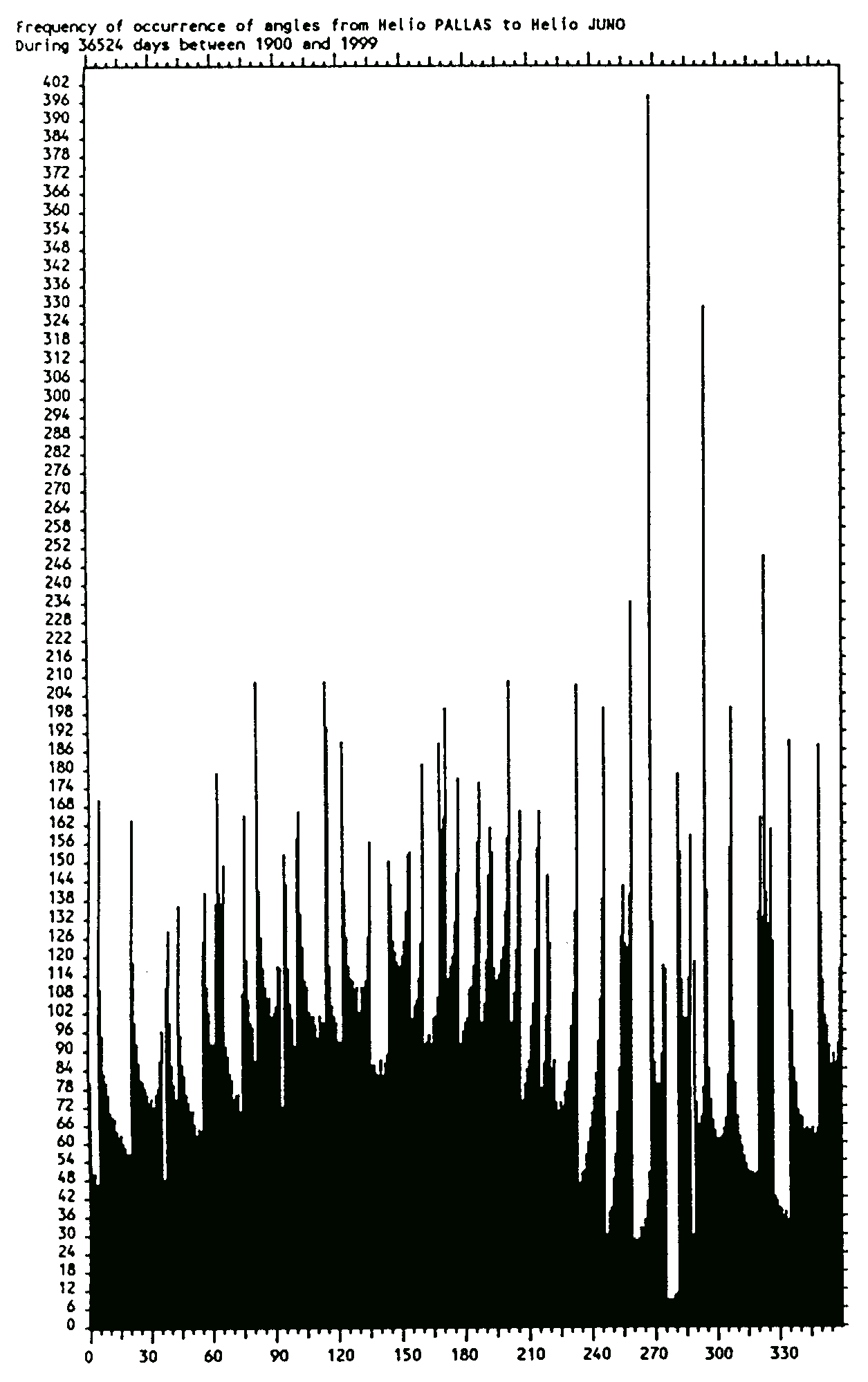
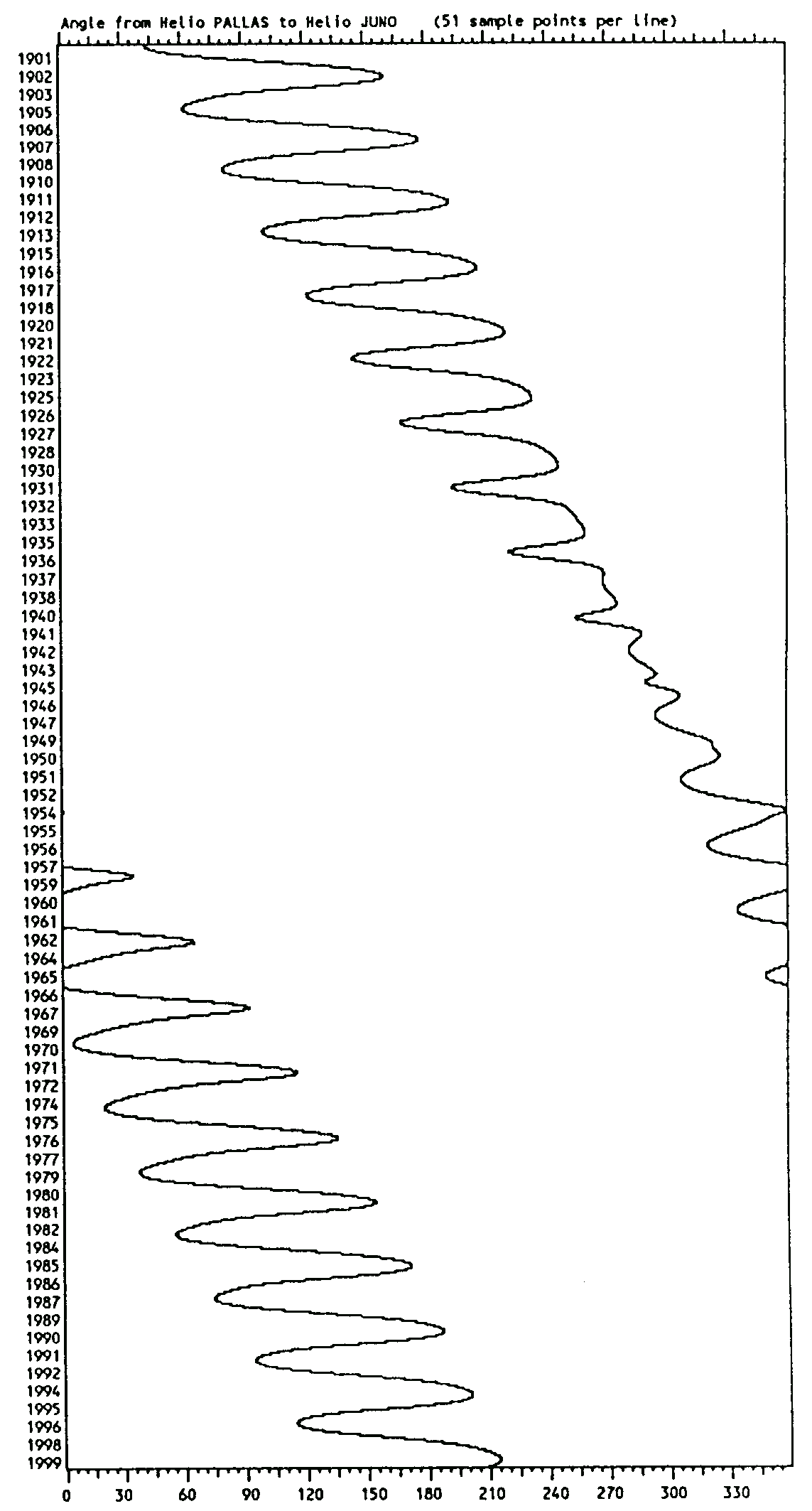
Helio Pallas-Vesta angles are another retrograde/spiky pattern, with a slightly different shape to the retrograde curves.
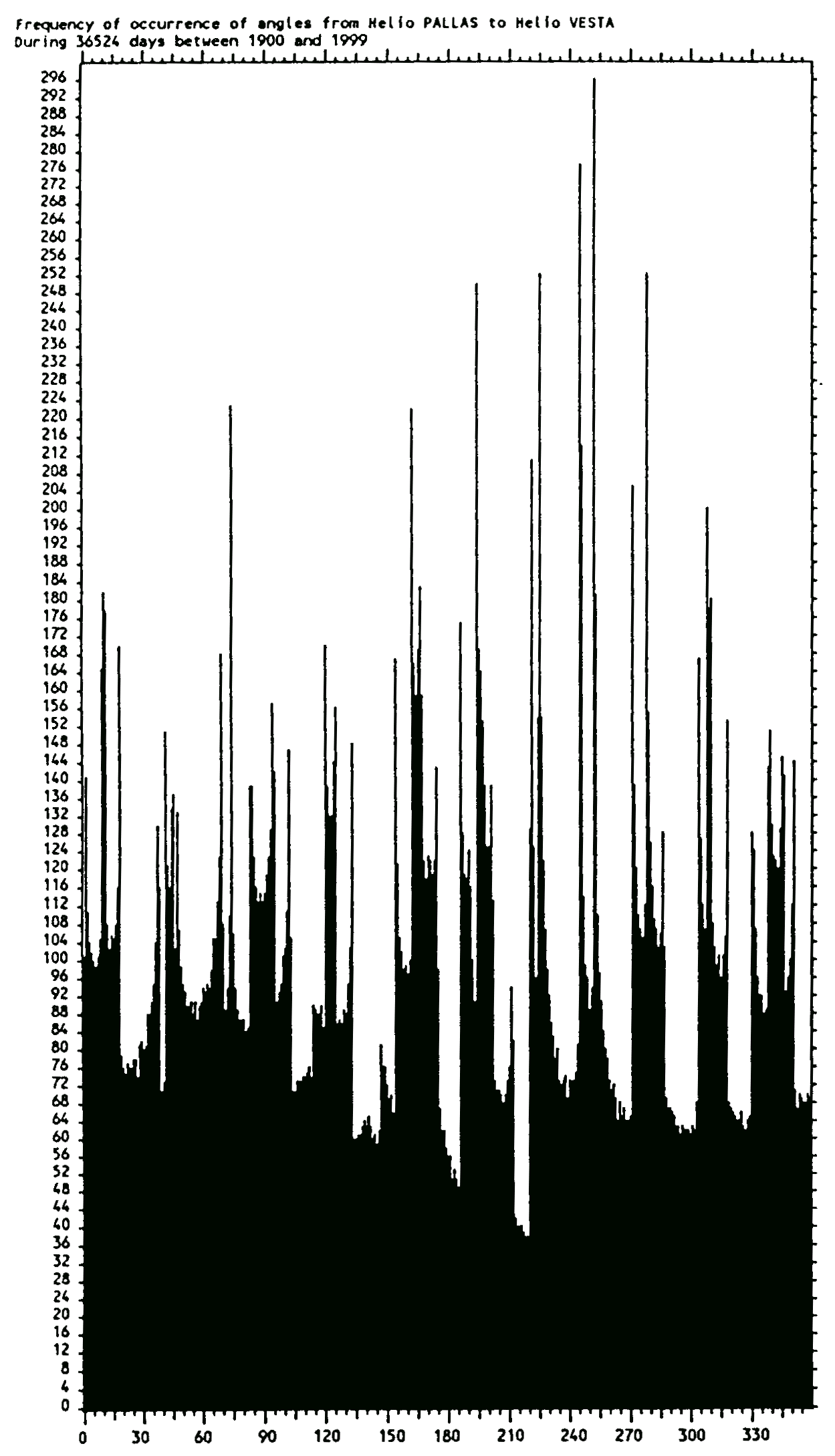
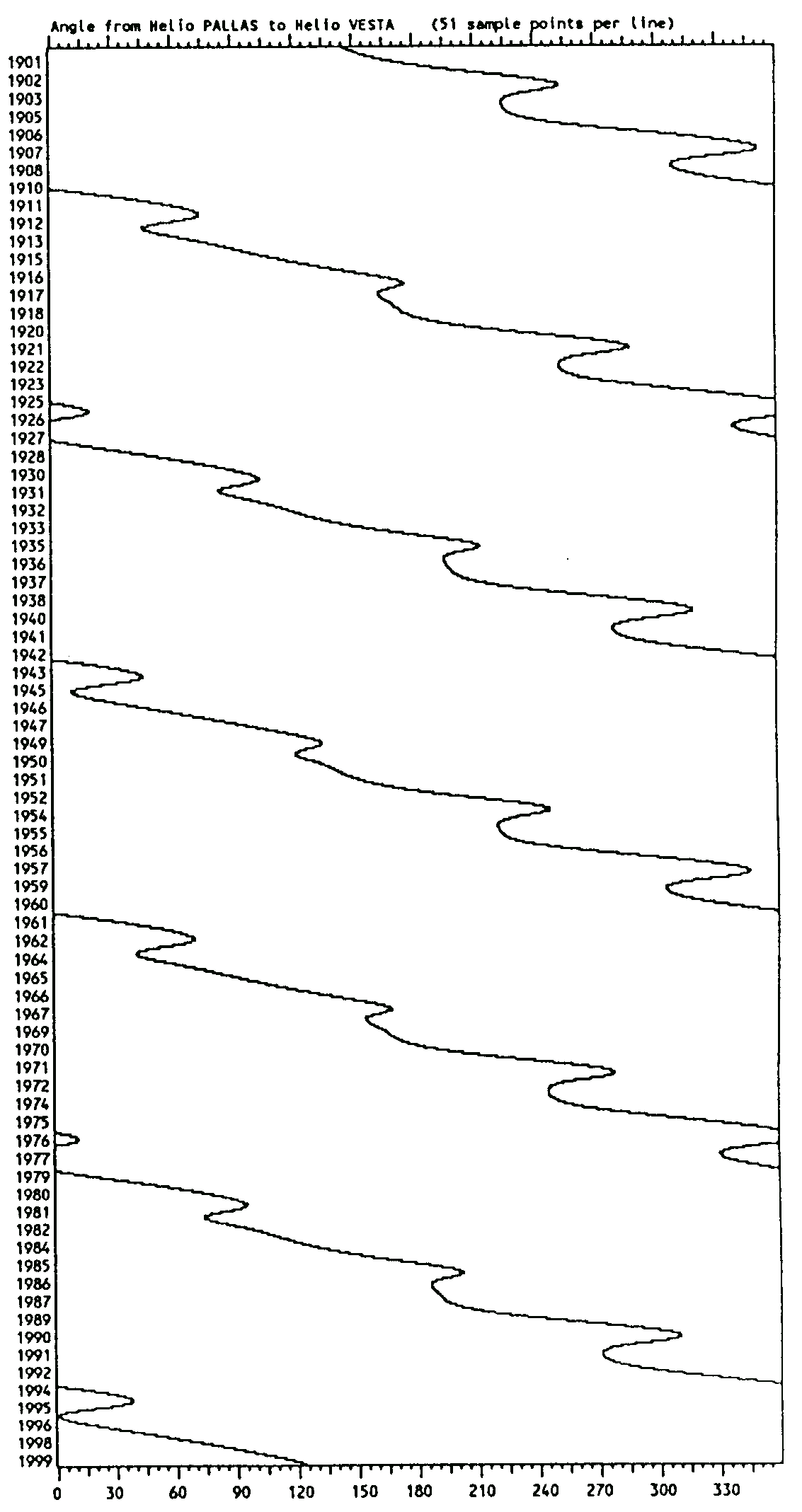
Helio Juno-Vesta is another nice retrograde cycle, with the angles of every fifth peak repeating at close enough to the same degree to give broad, heavy peaks and valleys instead of narrow spikes. It looks somewhat like a Venus geocentric longitude pattern, though the five repeating station positions of Venus take eight longitude cycles while this Juno-Vesta pattern gets five stations in each angular separation cycle.
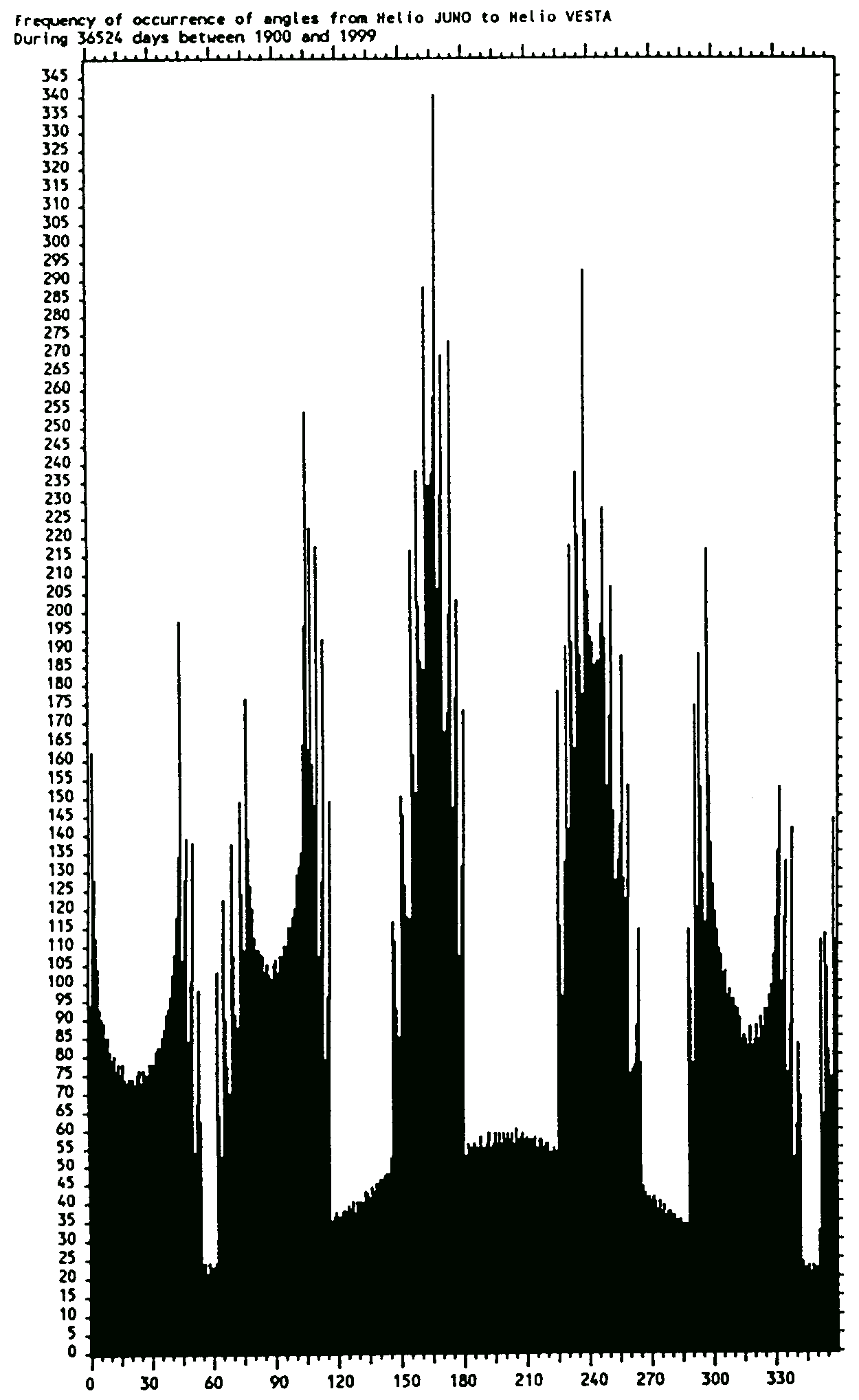
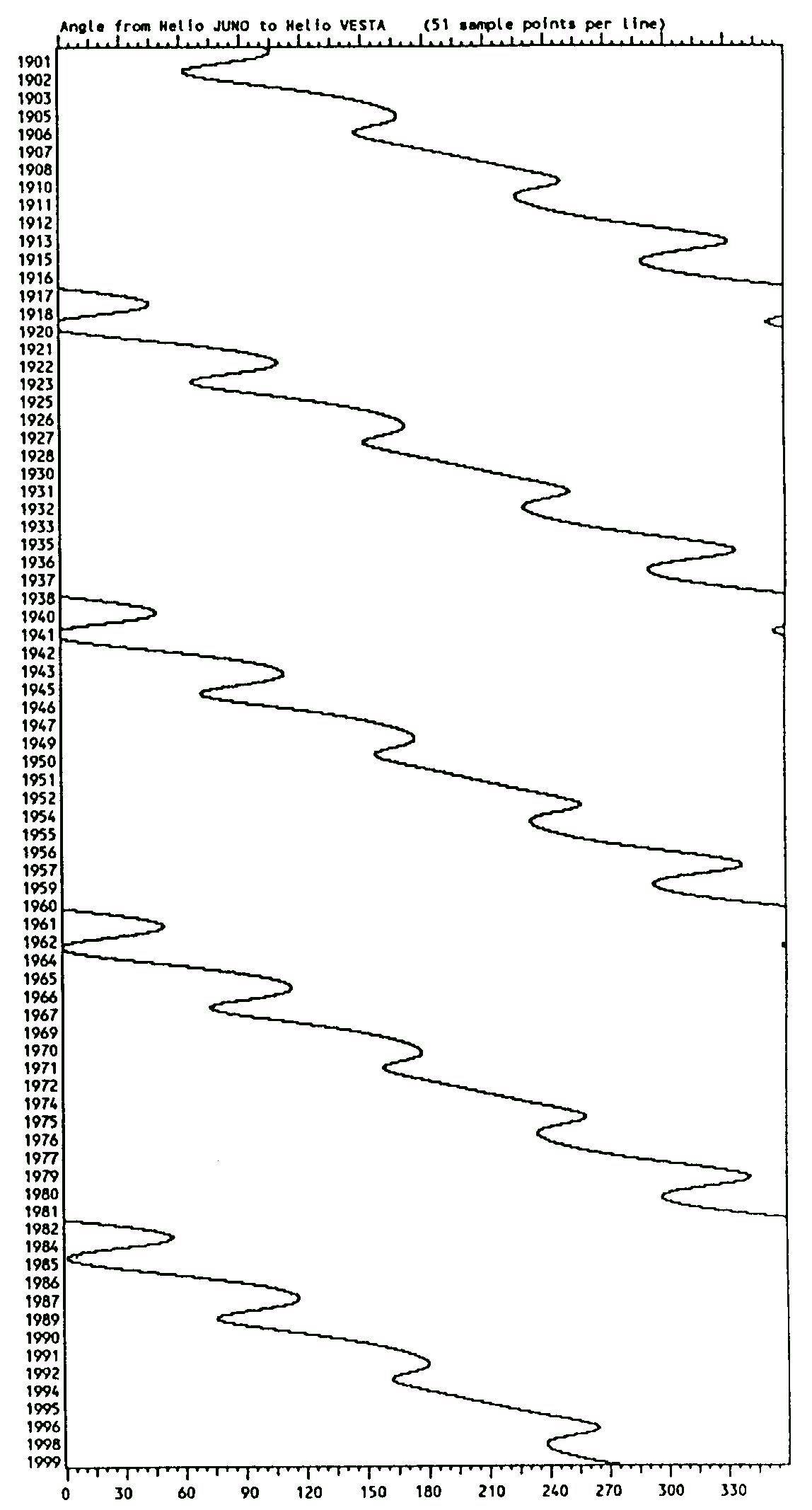
One of the reasons I found these patterns particularly interesting is that the retrograde cycle pattern is normally something I associate with GEOCENTRIC planetary positions. Before this, I had not seen any retrograde patterns between heliocentric planets—just occasional slowing or speeding up in direct motions. Between the asteroids, we are definitely getting retrograde cycles on heliocentric angular separations.
All of the geocentric patterns just take these basic heliocentric motions and add more small curves and variations to the motions, producing more small spikes in the frequencies.